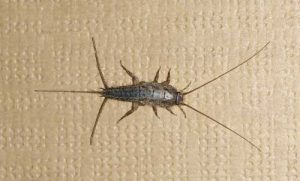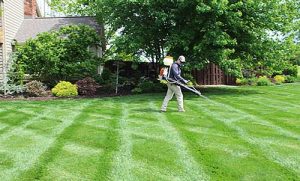Prepare Your Home for Winter Bugs!
As autumn rolls around, much needs to be done around your house beyond preparing the lawn and garden for the winter. Yes, that one last fertilizer treatment needs to be applied to boost root growth before winter and repair any damage caused by the summer heat. Yes, if you own them, storm windows need to be hung to keep winter heat inside. But let’s not forget about preparing your home to keep winter bugs out!
For some homeowners, pest control is a constant war, with battles all year long. On the other hand, some homeowners are more fortunate, and insects are a significantly smaller concern that only needs addressed periodically.
Regardless of your year-round situation, autumn insect control is important for every homeowner. Preparing for winter insects should rank up in importance with getting the snowblower ready or cleaning the fireplace chimney.
Types of Insects Commonly Found In and Around Your Home

While this isn’t a complete list, some of the most commonly found insects in our area include bees, ants, wasps, box elder bugs, lady beetles, chiggers, mites, cockroaches, spiders, flies, fleas, centipedes, silverfish, ticks, stinkbugs, pillbugs, and mosquitos.
Where to Look for Invading Pests
As summer temperatures drop and cooler autumn and winter conditions descend, insects—and other pests—naturally make their way indoors, looking for more suitable living spaces. For many people, this is the most common time to see indoor bugs. These unwanted guests are looking for food, water, warmth, and shelter.
Once insects come inside your home, you will typically find them in the following places.
- Dark corners or out of the way areas that aren’t highly trafficked by humans or pets. These spaces include attics, basements, and behind large appliances such as refrigerators, chest freezers, washers, and dryers.
- Any areas that are naturally damp or have problems with water. For most people, this is bathrooms, basements, and laundry rooms—especially if there is a water leak or previous water damage as moisture is a natural attractant.
- Places where food is stored. Common areas are pantries, cupboards, cellars, and basements. Opened containers of cereals, flour, rice, and other dry goods are likely attractants, but unopened items can attract insects too.
- Houseplants are also a common spot to look for invading pests. Fungus gnats can quickly become problematic when potting soils are overwatered, or plants are allowed to grow too thick without adequate air circulation through the foliage.
Common Bugs Found in a House in the Midwest
As the weather cools and insects migrate indoors, homeowners see fewer winged bugs inside and find more creepy-crawly varieties. Common winter insects found in Midwest homes include:
- Spiders
- Cockroaches
- Ants
- Silverfish
- Earwigs
- Pillbugs
- Crickets
- Millipedes
- Centipedes
- Sowbugs
- Beetles
- Weevils
- Fungus gnats
Prevent Pests from Entering Your Home

As mentioned before, invading pests are looking for food, water, warmth, and shelter—eliminating these four items, coupled with minimizing entry points, is the best way to dissuade them from coming inside.
- Keep storage areas of your home clean and tiny. This includes making sure there aren’t boxes or piles of items or clothing on the floor.
- Declutter countertops, pantries, closets, and cellars. Get rid of old papers, unused linens, etc.
- Promptly wash dishes and put them away in the cabinets. Do not let dirty plates, cups, and utensils sit around the house or in the sink for an extended time.
- Take kitchen and bathroom trash out regularly and keep the bottom of bins clean. Use soapy water or bleach solution to clean cans if garbage bags split, leaking their contents into the base.
- Caulk or seal openings in the brick or siding of your home, including where utilities, cables, and pipes come into the house.
- Repair any cracked or missing weatherstripping around the windows and loose mortar along the foundation.
- Place mesh screens over attic vents, dryer vents, the chimney, and air conditioning vents to keep insects from getting through these openings.
- Replace damaged door sweeps on screen and storm doors, and install ones on doors that don’t already have them. Door sweeps attach to the very bottom of the door, sealing the gap between the door and the floor. Bristle or strip-style sweeps not only prevent winter insects from coming into your home but also help with heating costs in cooler weather.
- Check all of the window and door screens for cuts or holes, fixing any damage you find. You can purchase kits to rescreen window frames yourself or check local hardware stores to see if they offer screen repair services.
- Prune trees and shrubs back from the exterior of your home, especially limbs that hang over the roof. Insect pests naturally live in these spaces and may drop or be blown onto the siding or roof of your house, finding a way inside.
- Keep firewood at a minimum, 20 feet from your home. Insects (and mice) naturally like to take up residence in woodpiles. If piles are close to your home and close to entry points, it’s only natural these pests will make their way indoors when the weather turns.
- Before bringing them into your home, check any new plants for insect pests like fungus gnats, spider mites, and aphids.
- Consider planting a chrysanthemum plant as a companion plant to help repel bugs such ticks, spider mites, aphids, and other pests.
Get a Home Insect Barrier Program

To create a home insect barrier, insecticide is sprayed outside around the perimeter of the home. When insects try to cross this barrier (or ingest it) to get inside, the actives penetrate through their skin, exciting their nervous system and killing them quickly. These barriers are incredibly helpful if you want to prevent spiders like the black widow or brown recluse.
If you’re feeling up to it, you can take this task on as a DIY project, and spray the home yourself. When creating the insect barrier, make sure to treat the entire foundation, around doors and windows, and any cracks and crevices that are possible entry points. Also, follow label directions carefully regarding dosing rate and application conditions such as temperature and rainfall events.
Do You Need Some Help With a Home Insect Barrier Solution?
For those less inclined to take on the project, consider hiring a professional pest control service for a home insect barrier program. Our treatment program is ecologically safe for use around kids and pets, providing an invisible shield to winterize your home against insects.
We would love to help you. Get a Free Estimate today for help with a professional home insect treatment by a RYAN lawn care expert!









